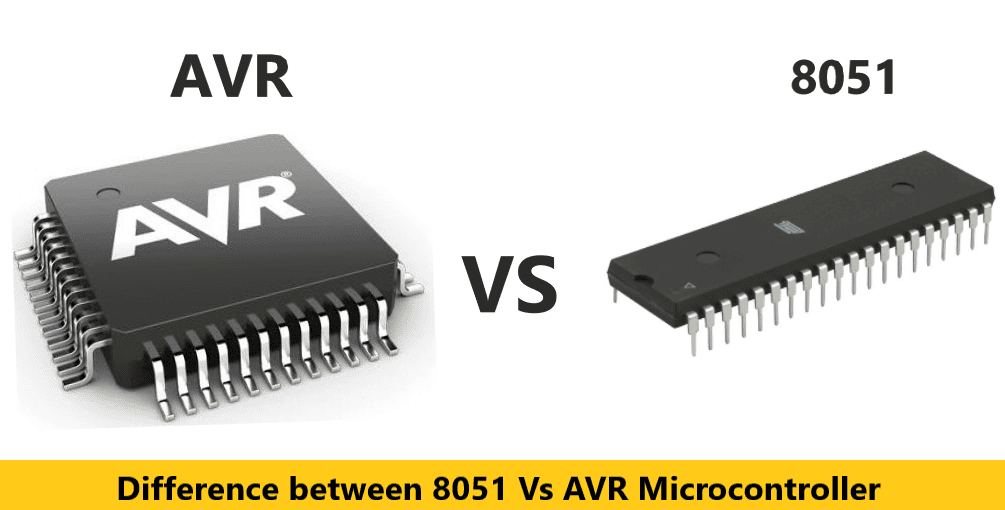
Microcontrollers are compact integrated circuits that are the brain of electronic devices around us, controlling their operations and functionalities. Understanding the difference between 8051 Microcontrollers and AVR microcontrollers is important for engineers, hobbyists, and enthusiasts working on embedded systems and IoT projects.
An Integrated Circuit (IC) is like a tiny independent computer made for specific tasks in embedded systems. Both 8051 and AVR are types of microcontrollers. They differ in their design, instructions, speed, cost, memory, power usage, and bus width.
In this article we will explore the architectural differences, memory organization, performance and industry applications of these two microcontroller families.
8051 Microcontroller
The 8051 microcontrollers belong to the 8-bit family. It's the best choice for basic applications due to its low power consumption and affordability. Intel developed it back in 1981. We can find this microcontroller in various devices, especially in automobiles, medical devices, and energy management systems.
Read More About- Getting started with 8051 Microcontrollers
AVR Microcontroller
Developed by Atmel Corporation in 1996, the AVR microcontroller follows a RISC Instruction Set Architecture (ISA), also known as Advanced Virtual RISC. The AT90S8515 was the first microcontroller in the AVR family. AVR microcontrollers are popular for their affordability and are widely used in robotic applications.
Difference between 8051 and AVR Microcontroller
8051 Microcontroller | AVR family controller |
|
|
Features of 8051 and AVR Microcontrollers
Features | 8051 | AVR |
Architecture | 8-bit | 8-bit or 32-bit |
CPU Speed | Up to 33 MHz | Up to 20 MHz |
Power Consumption | Higher Power Need | Low power required |
Instruction Set | Limited Instruction Set | Complex and diverse Instruction Set |
On-chip memory | Limited memory | Larger on-chip memory |
On-chip peripherals | Limited peripherals | More and diverse on-chip peripherals |
Interrupt handling | Simple and limited handling of interrupt | More complex and efficient Interrupt handling |
Cost | Lower | Lower (compared to some ARM and MSP430) |
Conclusion
In conclusion both 8051 and AVR microcontrollers have their strengths and weaknesses, the choice between them depends on your project's specific requirements. If you prioritize performance, efficiency, processing speed, more peripherals and an active development ecosystem, AVR should be a good option.
However, if you value Cost-sensitive project with basic control and familiarity, the 8051 could still be a better choice for certain applications. By carefully evaluating these differences, you can select the microcontroller that best suits your project needs.
If you are looking for Microcontrollers like 8051 and AVR then Campus Component is your one stop solution.
